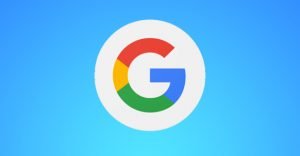How to Properly Optimize Your Google AdWords Ads

Google’s AdWords is incredibly lucrative. Where else can you spend $10 and potentially earn thousands? Of course, it all depends on how expensive your services are, how convincing your sales pitch happens to be and how visible your ads are at the end of the day. It’s all about optimization, and to properly optimize your ads, you have a lot on your plate. Here are a bunch of things to consider.
Consider Page Two
One of the most common pieces of advice – and one that comes later in this piece – is to avoid the highest volume keywords because of the insane competition they bring. With some of the highest volume keywords, a reasonable bid might not even get your ad on the first page. The thing is, for suitably high volume keywords, a position on the second page can work out quite nicely. Search Engine Journal has a nice case study about a site that uses a page two ad to great effect; it works because the volume for the search is so high, and the average quality of the sites on the first page is so low, that plenty of people move on to page two looking for value.
Seek A Middle Ground with Volume and Cost
Here’s the tip you were expecting; balancing out the volume of the search with the cost of running the ad. For ads of a high enough volume, you need to pay a lot to run the ad at a high position. This lowers your efficiency, causing you to spend more for each individual conversion, if you even make enough back to support the ad. Some highly commercial searches can support this; many cannot.
It’s better to look for a keyword that has a more moderate volume, but a cheap enough cost due to a lack of competition that you can dominate easily. You can also lower your bids to lower your ad on the screen; a position 2 or 3 ad is sometimes just as good as a top positioned ad. You never know unless you test out various positions.
Change Keyword Match Type
When you run an ad for a given keyword, you have to specify the match type. There are three types of match, and chances are you’re going to want to use phrase or exact matching.
- Broad matching includes any search that has your keywords. If your keyword is “red shoes”, a search for “Red dog shoes” would bring up your ad.
- Phrase matching includes any search that has your keywords in their precise order. Your ad for “red shoes” would come up in a search for “buy red shoes” but not for “red dog shoes.”
- Exact matching only brings up your ad in searches for your exact query. “Red shoes” would bring up your red shoes ad, but “buy red shoes” would not.
You can run the same ad three times, with each match type, to experiment and discover which works best. AdWords will show you the quality score of the ad, the click and impression volumes, the CTR and costs associated, among other statistics. Make the determination for yourself which match type works best for each keyword.
Don’t Forget Negative Keywords
Negative keywords are keywords specifically excluded from your ad visibility. For example, if you had a broad match “red shoes” ad, and you had no negative keywords, someone would see your ad when they searched for “how to burn red shoes.” This isn’t a query with much intent to buy red shoes, so you might list “burn” in the negative field. This way, your ad won’t show up for this query, which is fine because they wouldn’t convert anyway.
You can use pre-created lists of negative keywords, or you can run your ads for a while and add in negative keywords as they appear. This second option wastes some of your budget, but the choice is yours.
Optimize Your Landing Page
Your landing page is the key to a successful ad. You could have the best ad headline and description in the world, but if the user lands on a terrible landing page, they aren’t going to convert. The ad copy, the headline, those are the equivalent of the salesman ringing your doorbell. The landing page is their sales pitch, and you only have a minute to deliver it.
There are a ton of ways you can improve your landing page, from changing your CTA color to using an exit intent pop-up to stop people before they leave. One great way is actually create a number of template-based duplicates for different keywords. Make sure these are noindexed, unless you want to fall victim to a duplicate content penalty, however.
Customize Landing Page URL
This one is just a simple little tip. Your ad displays your landing page URL in addition to your description and headline. A custom landing page URL that’s readable in plain English is a subtle reinforcement of the ad, and it can give your ad a little bit more potency.
Track Success and Iterate Design
After a few days, a few weeks and a few months of running any ad, you should review it. Does it bring in the volume of clicks you want it to bring? Do those users go on to convert, do they end up in your remarketing list or do they never appear again? Identify the most successful parts of your ads and iterate them into a new generation. Prune out unsuccessful details. Change ad text, change landing pages, split test and iterate again and again. The more generations you go through, the stronger your ads will be.
Stalk Competition and Undercut Their Efforts
You can use a wide variety of tools to spy on your competitors, using public information is would be difficult to obtain on your own, but which is delivered right to you using the tools. For AdWords specifically, you can see almost all of their campaign details, including duration of their campaigns in keyword niches. This will help you learn whether you can oust them or if they’re entrenched. It can also give you ideas for more keywords to target, where you can undercut them and drive their ad down.
Adjust Bids by Device
Sometimes, you’ll discover that mobile users and desktop users have very different needs in the same queries. Using the ad settings in AdWords, under devices, you can see the percentages of each device used for each ad. The Bid Adjustment column allows you to adjust the bid up or down for types of devices, allowing you to prioritize your budget towards the best converting devices and their users.

 ContentPowered.com
ContentPowered.com




